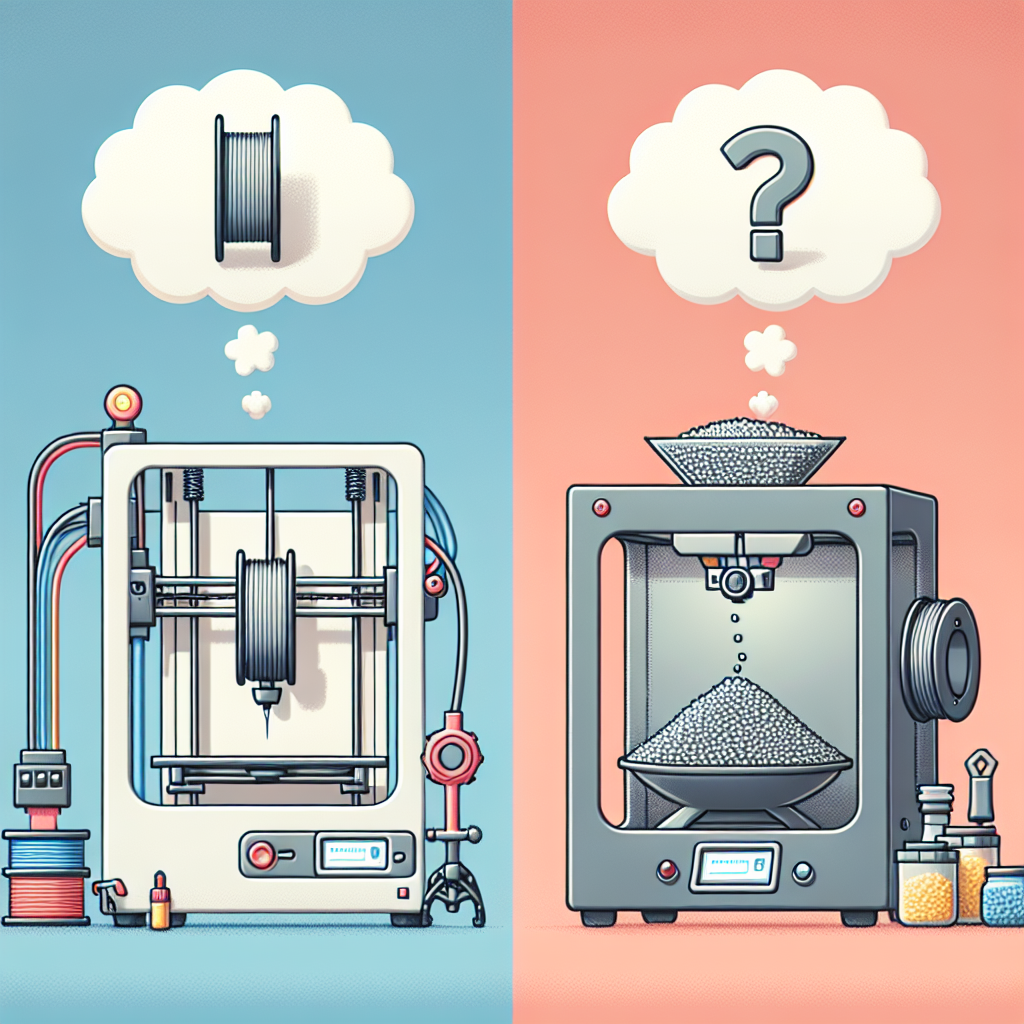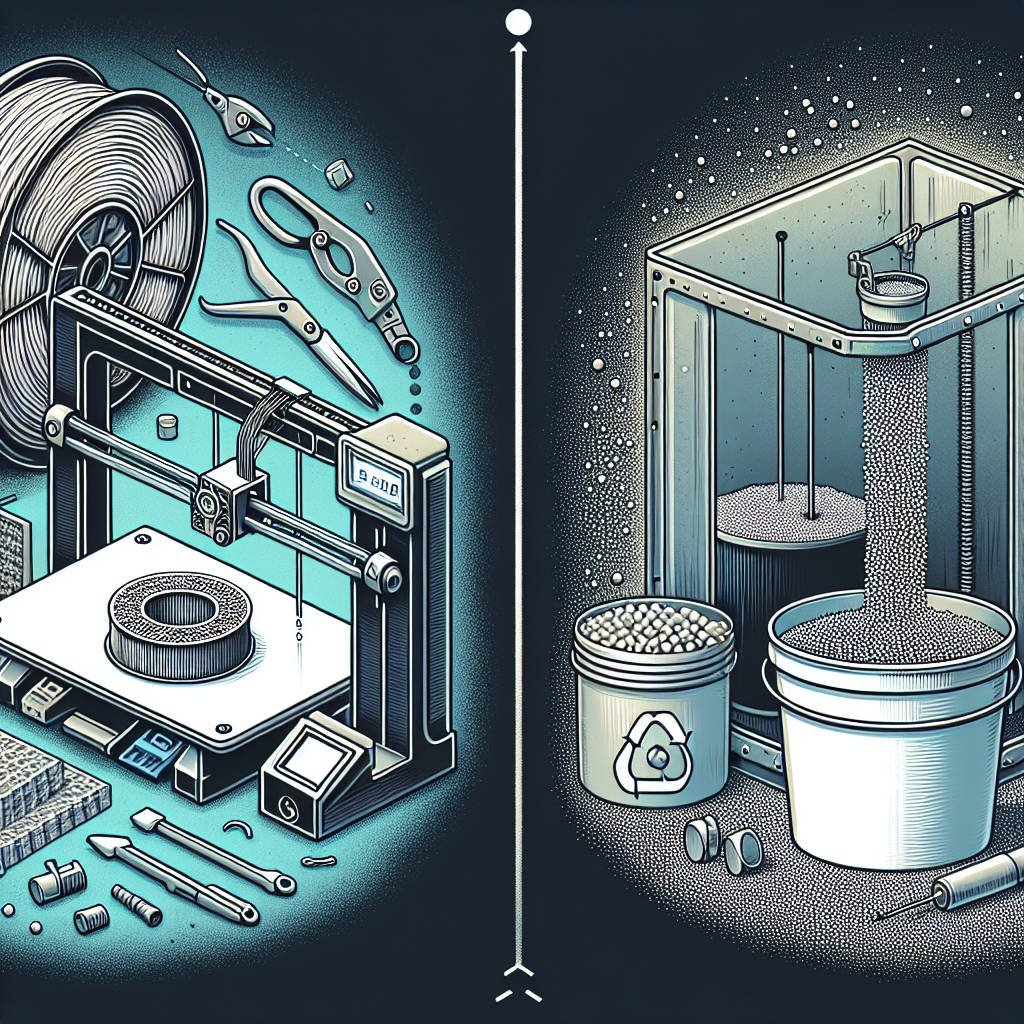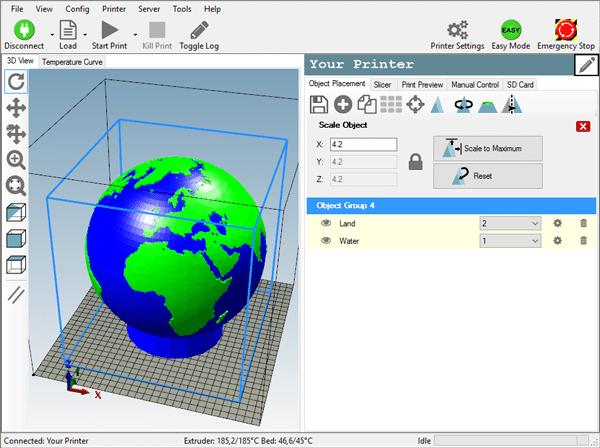Sovol SV08 Core-XY 3D Printer Voron 2.4 Open Source, 700mm/s High Speed 3D Printers with 300℃ Clog-Free Hotend & Camera, Auto Leveling with 4 Independent Z Motors, Large Print Size 13.8x13.8x13.6in
$699.99 (as of June 18, 2025 23:32 GMT +00:00 - More infoProduct prices and availability are accurate as of the date/time indicated and are subject to change. Any price and availability information displayed on [relevant Amazon Site(s), as applicable] at the time of purchase will apply to the purchase of this product.)Filament vs Pellet 3D Printing: Which is the Future?
Discover the future of 3D printing with a comparison of filament and pellet methods. Explore their differences and determine which is the better choice.

3D printing has revolutionized the manufacturing industry, enabling the creation of complex and customized objects with ease. As the technology continues to evolve, there are different approaches to 3D printing, with Filament and pellet-based systems being the most popular. In this article, we will explore the differences between filament and pellet 3D printing and discuss their respective advantages and disadvantages. By the end, we hope to shed light on which approach holds the most promise for the future of 3D printing.
The Basics of Filament 3D Printing
Filament-based 3D printing, also known as fused deposition modeling (FDM), is the most widely used method in the industry. It involves melting a thermoplastic filament and extruding it layer by layer to create an object. The filament is typically made of materials like PLA (polylactic acid) or ABS (acrylonitrile butadiene styrene).
One of the key advantages of filament 3D printing is its accessibility. Filament printers are affordable and easy to use, making them suitable for hobbyists, educators, and small businesses. Additionally, the wide range of filament materials available allows for versatility in terms of object properties, such as strength, flexibility, and heat resistance.
However, filament-based 3D printing also has its limitations. The layer-by-layer extrusion process can result in visible layer lines on the printed object, which may require post-processing to achieve a smooth finish. Moreover, the filament’s diameter and quality can significantly impact print quality, making it crucial to use high-quality filaments for optimal results.
The Advantages of Pellet 3D Printing
Pellet-based 3D printing, also known as granular extrusion modeling (GEM), is a relatively new approach that offers several advantages over filament printing. Instead of using pre-made filaments, pellet printers use raw plastic pellets as the feedstock. These pellets are melted and extruded to create the desired object.
One of the primary advantages of pellet 3D printing is cost-effectiveness. Pellets are significantly cheaper than filaments, making them an attractive option for large-scale manufacturing. Additionally, using raw pellets allows for more control over the material composition, enabling the creation of custom blends with specific properties.
Pellet printers also offer faster printing speeds compared to filament printers. Since the pellets can be melted at higher temperatures, the extrusion process is quicker, resulting in reduced printing times. This makes pellet printing suitable for applications that require rapid prototyping or high-volume production.
Challenges and Limitations of Pellet 3D Printing
While pellet 3D printing has its advantages, it also faces certain challenges and limitations. One of the main hurdles is the lack of availability and variety of materials in pellet form. Currently, the range of plastic materials available as pellets is more limited compared to filaments. This can restrict the choice of materials for specific applications.
Another challenge is the complexity of the printing process. Pellet printers require precise control over temperature, pressure, and extrusion rates to ensure consistent print quality. Achieving these parameters can be more challenging compared to filament printers, which have been refined over many years.
Furthermore, post-processing can be more time-consuming with pellet printing. The rough surface finish of pellet-printed objects often requires additional steps, such as sanding or polishing, to achieve the desired level of smoothness. This can add to the overall production time and cost.
The Future of 3D Printing: Filament or Pellet?
As with any technology, the future of 3D printing is likely to be shaped by a combination of factors, including advancements in materials, hardware, and software. While both filament and pellet 3D printing have their merits, it is challenging to predict which approach will dominate in the long run.
However, it is worth noting that filament 3D printing has a significant head start in terms of market adoption and infrastructure. The extensive range of filaments available, along with the established ecosystem of filament-based printers and suppliers, gives it a competitive edge.
On the other hand, pellet 3D printing shows promise in terms of cost-effectiveness and speed. As the technology matures and more materials become available in pellet form, it could become a viable alternative for large-scale manufacturing and industrial applications.
Case Study: Automotive Industry
The automotive industry provides an interesting case study for comparing filament and pellet 3D printing. Filament printers are commonly used for prototyping and small-scale production of automotive parts. The ability to quickly iterate designs and produce custom components makes filament printing a valuable tool in the industry.
However, pellet 3D printing has the potential to revolutionize the automotive manufacturing process. The cost-effectiveness and speed of pellet printing could enable the production of end-use parts at scale, reducing reliance on traditional manufacturing methods. Additionally, the ability to create custom material blends could lead to the development of lightweight and high-performance components.
Conclusion
Both filament and pellet 3D printing have their strengths and weaknesses, making it difficult to determine which approach will dominate in the future. Filament printing offers accessibility, versatility, and an established ecosystem, while pellet printing offers cost-effectiveness, speed, and the potential for custom material blends.
Ultimately, the future of 3D printing will likely involve a combination of both approaches, with each finding its niche in different industries and applications. As the technology continues to evolve, advancements in materials and hardware will further blur the lines between filament and pellet printing, opening up new possibilities for innovation and customization.
Whether you choose filament or pellet 3D printing, one thing is clear: 3D printing is here to stay, and its impact on manufacturing and design will only continue to grow.









